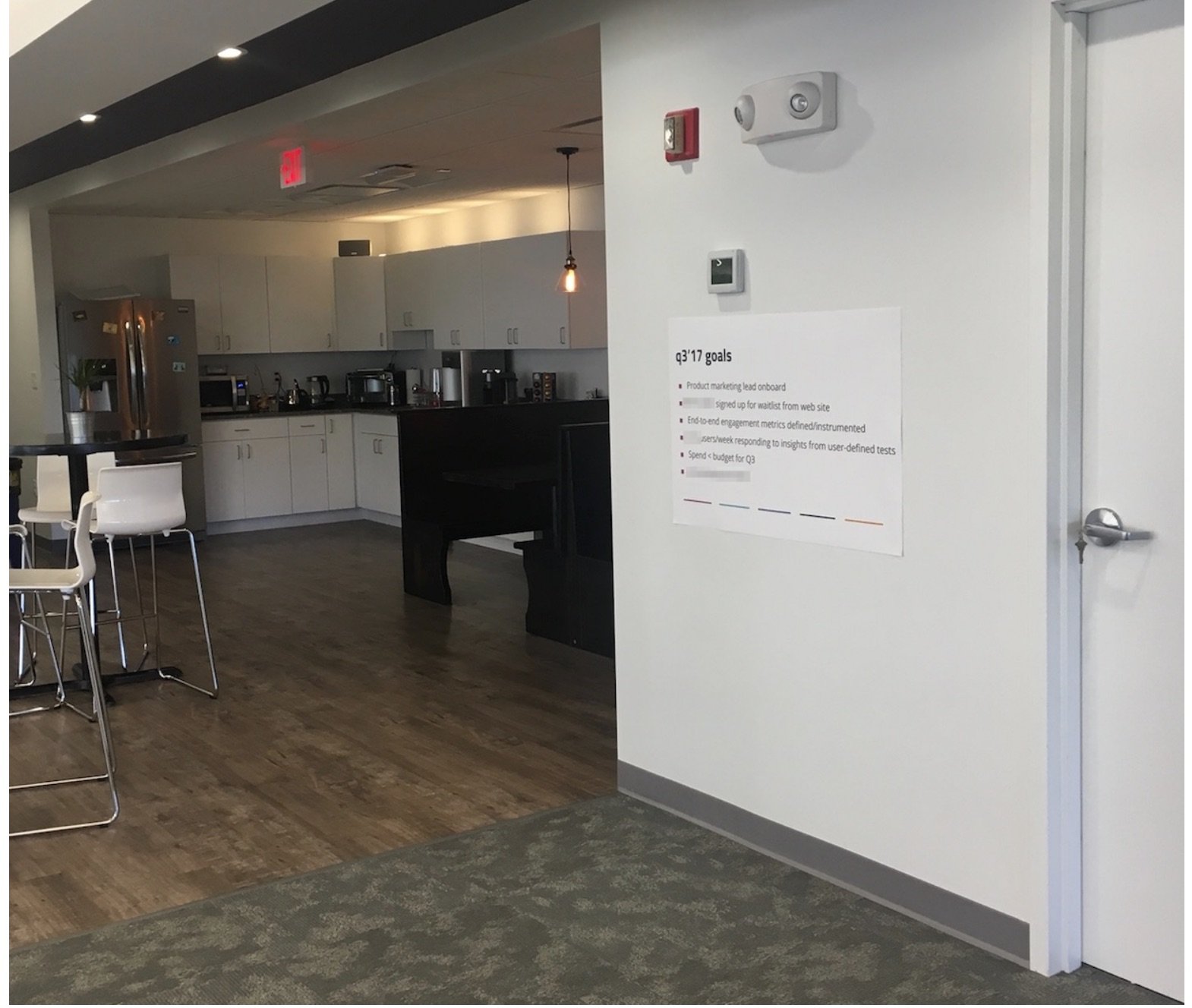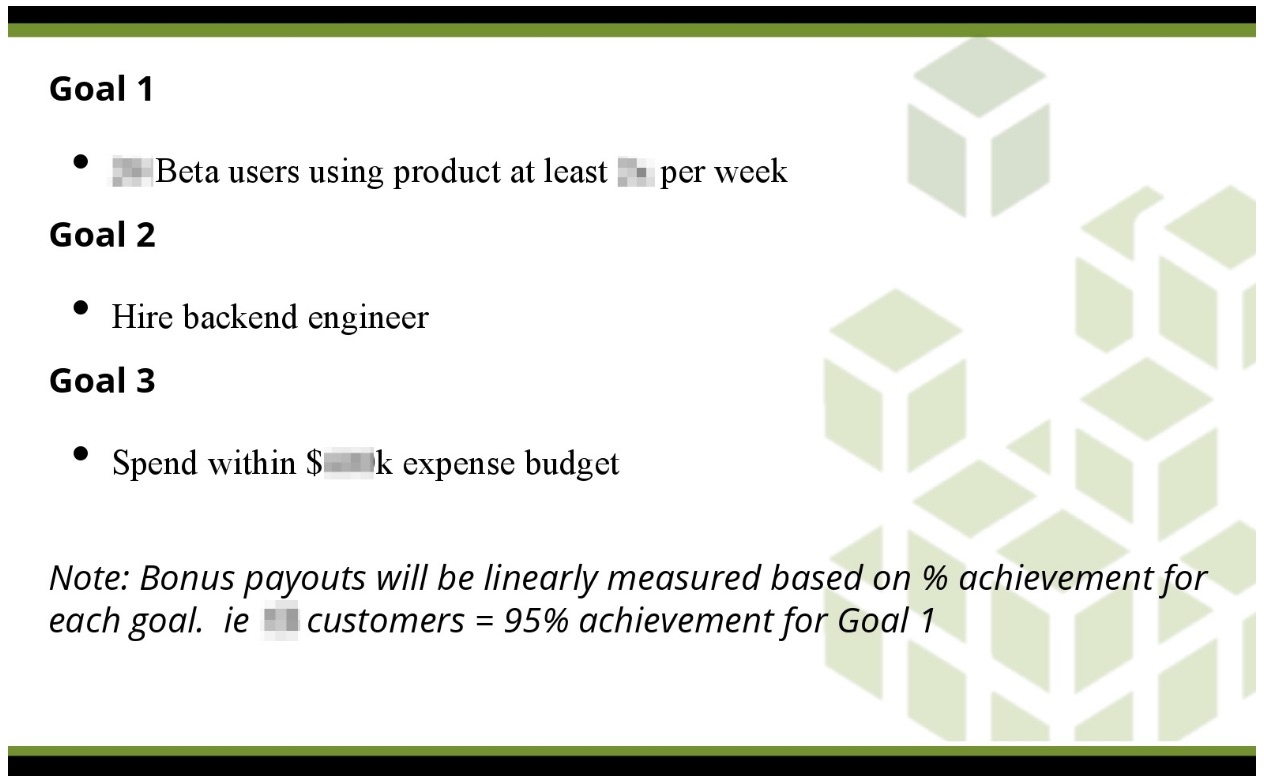Our team has worked at companies both large and small and all of these companies have had different designs for how they set goals for their teams. For example, salespeople have usually been coached on activity or revenue; product people are usually trained on feature delivery; customer success is usually goaled on retention or NPS and so on for other groups. Our experience has been that most groups are goaled on items very specific to their responsibility with minimal overlap of goals across teams. Based on what we’ve learned, we decided to take a completely different approach to how we set goals at mabl. We set milestones that are the same across all teams: company-wide goals. We thought we’d share more about our approach and the impact it has had.
How we use goals
Like most companies, goals are an important part of how we build the business. We use quarterly goals to help guide where we spend the majority of our time, across all areas of the company. We call these “company goals”. Each quarter, we review our draft of these goals with our team to get feedback, adjust where necessary, and ensure that everyone is on board with our key focus for the next 90 days. With the buy-in of the team, next we have formal ratification of the goals at the board level. After things are finalized, we always print out the goals on a large poster and put them in a central area in the office. In our current office, we have a kitchenette on one end and we put the goals directly on the way to the kitchenette, so our team walks by and are reminded of them very frequently. Every employee in the company, regardless of role or level, has some portion of their compensation tied to goals and we pay out based on goal achievement as quickly as possible after the end of a quarter. This compensation component helps everyone take the goals seriously.

mabl Q3 Goals on the wall near our kitchen
How we structure goals
At mabl, every employee shares the same goals. Whether you’re an engineer, a founder, a salesperson, a marketer, or an office manager, every person is measured on the same goals. We’ve been at other companies where perhaps the CEO and key execs have their own goals and then non-management employees on different teams have goals aligned with their specific responsibilities. We’ve purposely tried to avoid this alignment issue. This is actually one of the reasons that we seek approval of the goals on the board. From our board all the way down to each employee, everyone shares the same objectives.
As we design the goals, we try to keep them to a minimum, typically 4-5 each quarter so we’re not being stretched too thin. In addition, we aim to include goals that are clear, measurable, and that every employee can influence. For example, this quarter, we have a goal to achieve a certain number of pre-launch signups for our service. Despite this being a goal which is aligned more with marketing, our engineering team is also doing their part. When our engineering team presents at local Meetups, they put in a mention of our company and product at the end of their presentations including a link to our website for signups. We also try to keep things simple and don’t weight any single goal differently than others – everything is weighted equally and paid out equally. We have a loose framework on types of goals we include as well. We typically have at least one goal related to growth – whether that be MRR/ARR or customer adoption, one goal related to recruiting, and one goal related to the product, but again this is loose and really depends on where we are in the maturity of the business.

An example of some early goals at Stackdriver
The Impact
What we’ve found is that our goal design drives broad collaboration and a feeling of everyone being on the same level throughout the company – regardless of role or seniority. As an example, one of our goals for this quarter is to hire a marketing lead. Everyone in the company knows, if we don’t hire a marketing lead, we all won’t get paid a portion of our bonus for the quarter. Like most companies, we do have a referral bonus but more than anything, having a company-wide goal of hiring an individual has driven an incredible amount of recruiting. Our team has posted the job on their university job boards, they’ve reached out to individuals they haven’t spoken to in a long time to get them excited about mabl, and even posted the job on their LinkedIn and Twitter feeds. Our team has demonstrated such amazing outreach, beyond just being driven by a referral bonus. Luckily, we did hire a great candidate for the role.
Another very memorable example of the impact our company goals have was at Stackdriver a few years ago when had a pretty aggressive MRR goal. Our sales team had no sales engineers, they had to be knowledgeable enough to give a product demo to technical users, despite not being engineers themselves. However, if things get tough on a demo and they can’t answer a question, they’re encouraged to quickly raise their hand which means that one of our developers or a founder needed to jump on the demo and help answer the questions. This happened as one of our sales reps was on the phone with a significant gaming company from Japan, and they had very specific questions about how we’d monitor a specific part of their application. Our rep raised his hand for help and within seconds, one of our lead engineers got on the call and was able to answer the question. That gaming company quickly became one of our largest customers. It was awesome to see this level of collaboration between two completely different teams – both striving to achieve the same goal. Luckily, this deal helped us reach the MRR target.
The Future
This design of how we set goals has worked as we’ve been a small team at mabl and as we scaled to about 35 people at Stackdriver. As we continue to grow (yes we’re hiring!), it will be interesting to see how our goal design continues to morph to support collaboration and growth in our business.






